

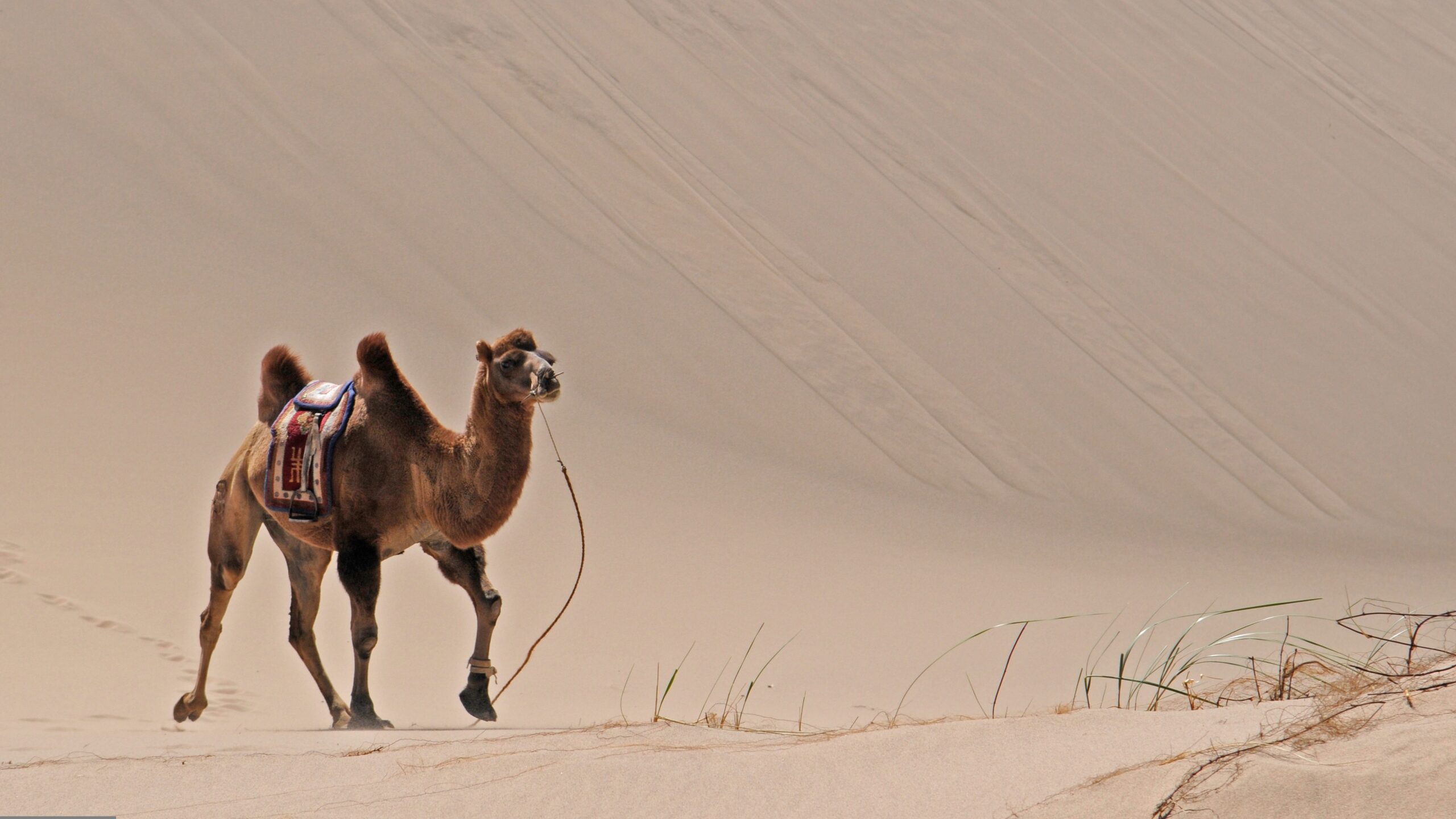
The Gobi Desert is a vast and mysterious landscape that spans across southern Mongolia and northern China. The Gobi Desert is known for its extreme temperatures, unique wildlife, and varied topography. The mysterious Desert is a treasure trove of scientific and historical significance. From the ancient cities of the Gobi Desert that helped shape the silk road to some of the most important dinosaur fossils ever found, the Gobi Desert offers us some insights into those who inhabited the world before us. In this article, we will explore some fun facts about the Gobi Desert, including its geography, science, and its historical and cultural significance.
The Gobi Desert is a large desert region that spans across southern Mongolia and northern China. This vast desert lies between the two countries. Most of the northern part of the Gobi Desert is in Mongolia, and most of the southern part is in China. Over millions of years, it has become a unique and fascinating landscape that covers the two unique and fascinating countries. In the Gobi desert, natural beauty meets human history, offering insight into diverse cultures and nomadic ways of life.
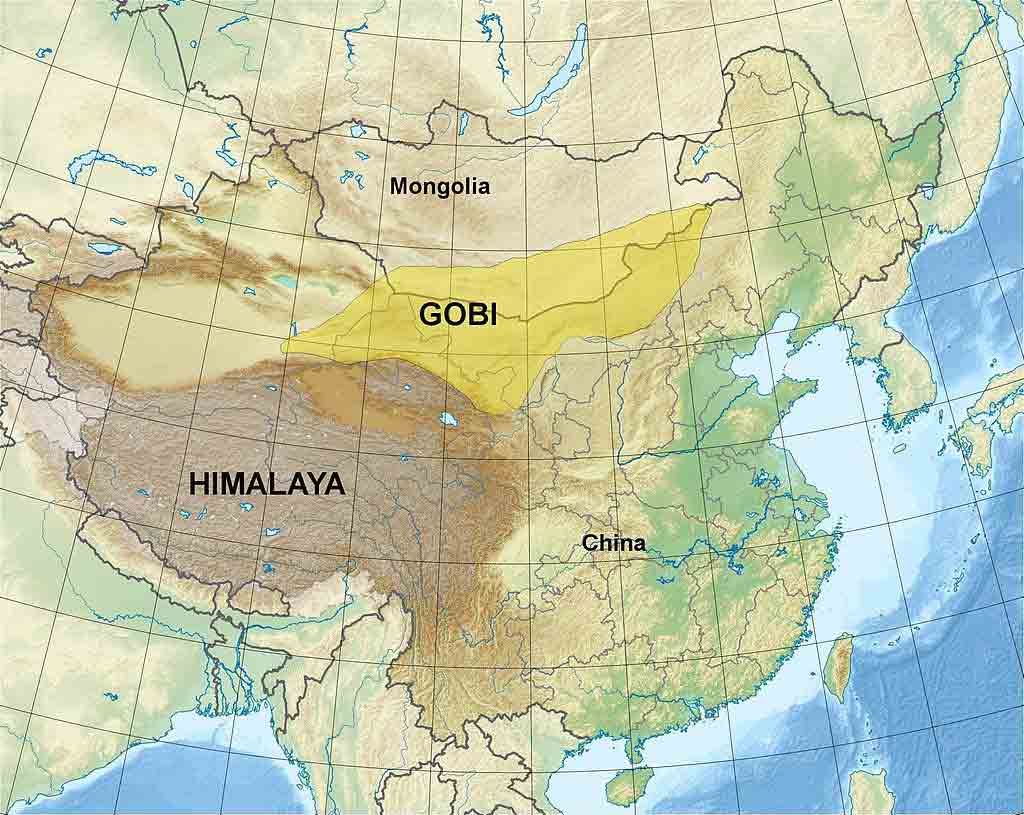
The Gobi Desert is the fifth largest desert in the world, covering an area of approximately 500 000 square miles (1 294 994 square kilometers). This vast desert is known for its varied topography, a mix of sand dunes, rocky outcrops, and grasslands. The desert borders the Tianshan Mountains and Altai Mountains in the west, the Loess Plateau in the east, and the Himalayas in the south. Its diverse landscapes offer a wealth of opportunities for adventure and exploration, from camel trekking to ATVs, making it a popular tourist destination.
The Gobi Desert is renowned for having extremely high summer temperatures of up to 131°F (55°C) and extremely low winter temperatures of as low as -40°F (-40°C). Both people and animals find it to be a difficult habitat because of these harsh temperatures, although many have adapted to it. The desert is a land of opposites, with hot days and chilly nights, making it a special environment for survival and the study of how animals adapt to both extreme heat and extreme cold temperatures.
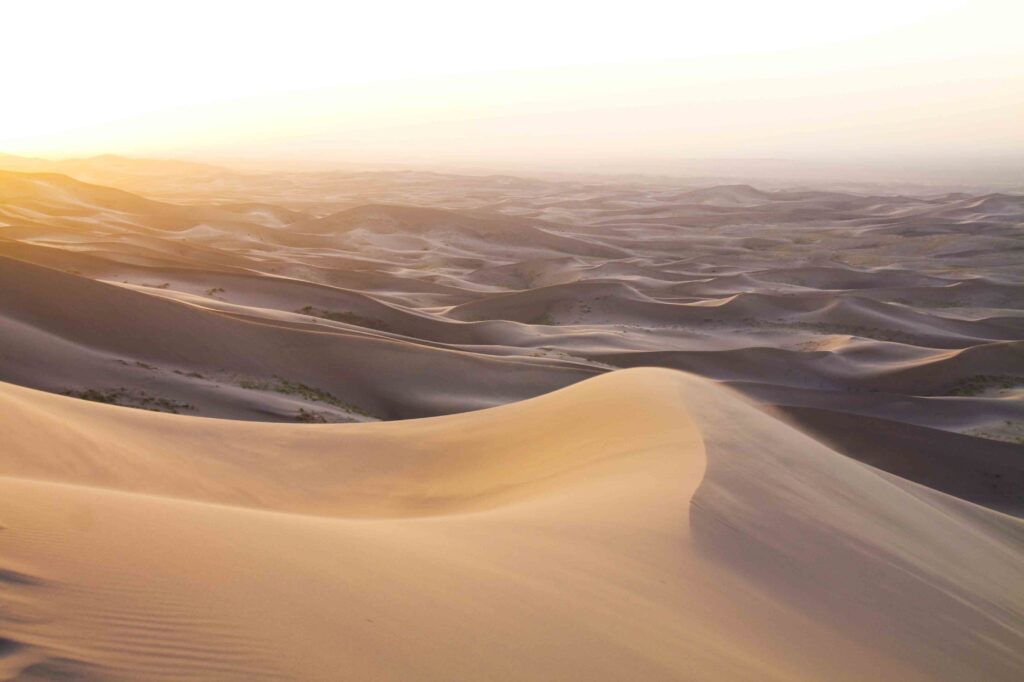
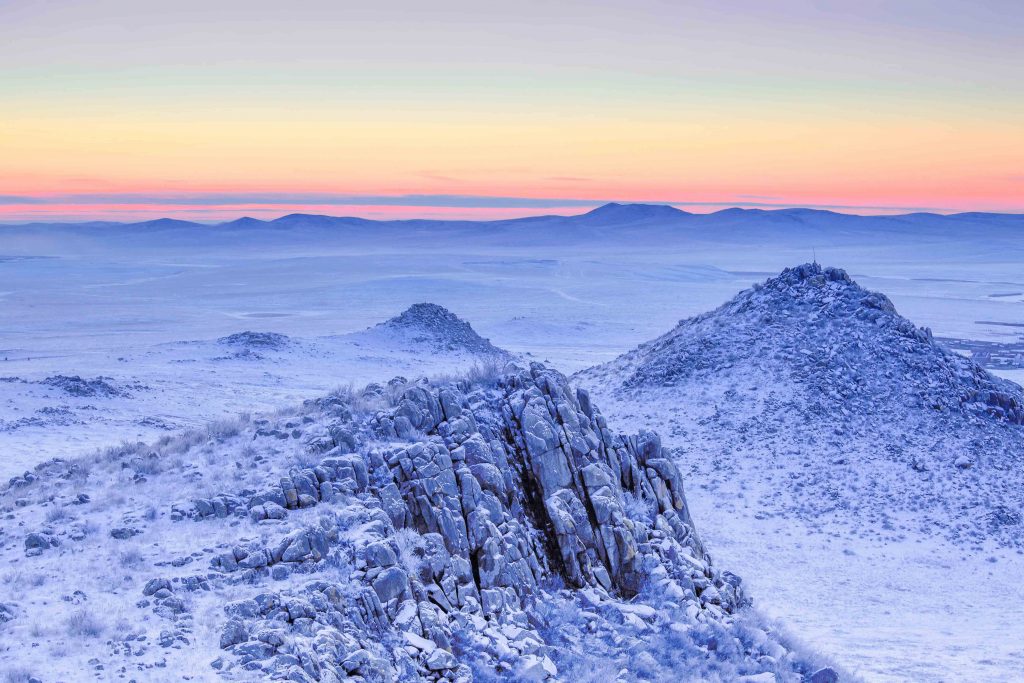
The Silk Road, which connected China to the Mediterranean Sea, was an important trading center in the Gobi Desert. China was connected to the Mediterranean and Central Asia by a network of commercial routes known as the Silk Road. With its mineral resources including jade, gold, and silver as well as its textiles, pottery, and other products, the Gobi Desert was a significant stop along the Silk Road. The history and culture of the Gobi Desert and the surrounding areas were significantly influenced by the Silk Road and the traders who traveled through it.
Numerous historic Silk Road cities, notably Dunhuang and Turfan, can be found in the Gobi Desert. Along the Silk Road, which linked China and Central Asia to the Mediterranean Sea, these cities historically served as significant commercial hubs. For instance, Dunhuang, is renowned for its cave temples and manuscripts, was a significant stopping point for traders and travellers along the Silk Road. In contrast, Turfan is well-known for its historical monuments and the ancient city of Jiaohe, which was once a significant Buddhist and cultural hub. The rich history of the area and the cultural exchange that occurred along the Silk Road can be seen in these historic cities.
The Mogao Caves and the remnants of the ancient city of Loulan are two of the significant cultural landmarks that can be found on the outskirts the Gobi Desert in China. Thousands of Buddhist writings, statues, and murals may be found at the Mogao Caves, which are fittingly known as the Thousand Buddha Caves, this cave is a UNESCO World Heritage Site. The ancient city of Loulan’s remains are also a well-preserved illustration of a historic city that was once prosperous along the Silk Road. These two locations provide a window into the region’s rich history and culture.
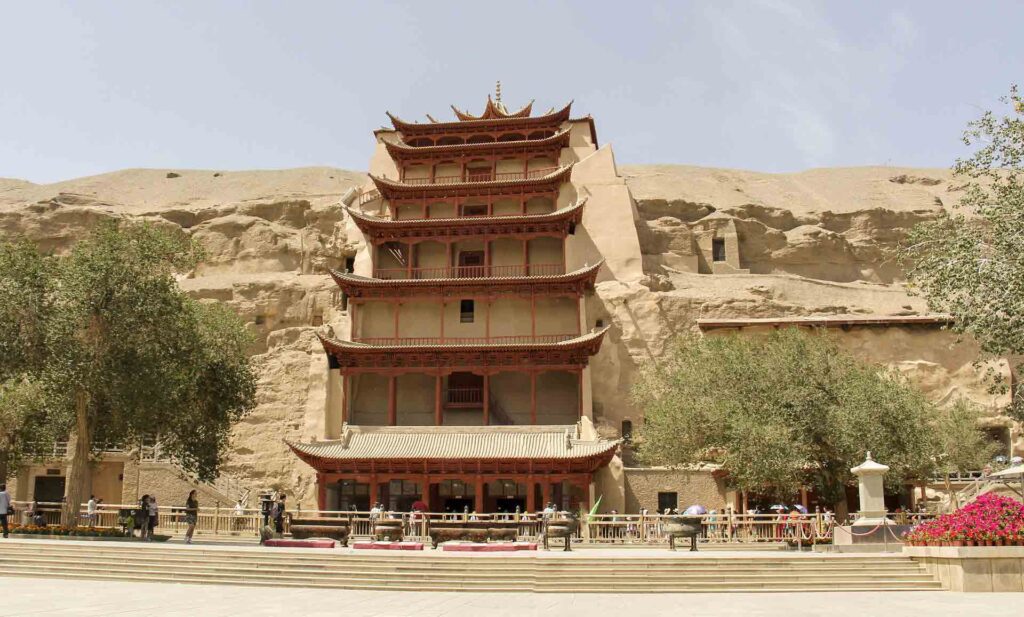
The desert is important in the field of science that studies desertification and climate change, as the Gobi Desert features a unique and distinct ecology with diverse landforms. The studies on desertification and climate change can provide a critical insight into how humans actions can affect the ecosystems around them and the potential effects of climate change.
The Gobi Desert boasts an array of unique landscapes, including sand dunes, rocky outcroppings, and the famous “singing sands”. These singing sands, also known as whistling sands or barking sands, produce a unique sound when walked upon or blown by the wind. The sound is caused by the movement of sand particles, which rub against each other and create a high or low-pitched noise. The singing sands can also be found in other deserts around the world, but the Gobi Desert’s singing sands are particularly well-known for their distinct sound.
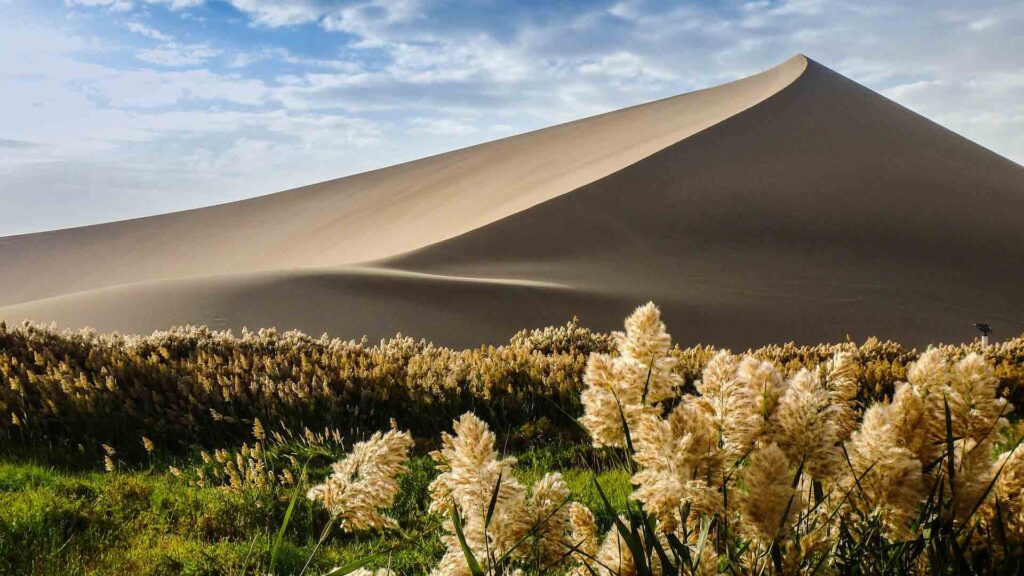
Mongols, Hui, and Kazakhs are just a few of the numerous ethnic groups that call the Gobi Desert their home. Since they have been residing in the desert for so long, these ethnic groups have developed unique cultures, rituals, and traditions. They have also created a nomadic lifestyle and adapted to the harsh desert environment, depending on herding, hunting, and trading to survive. Their manner of life and culture play a significant role in the history of the Gobi Desert.
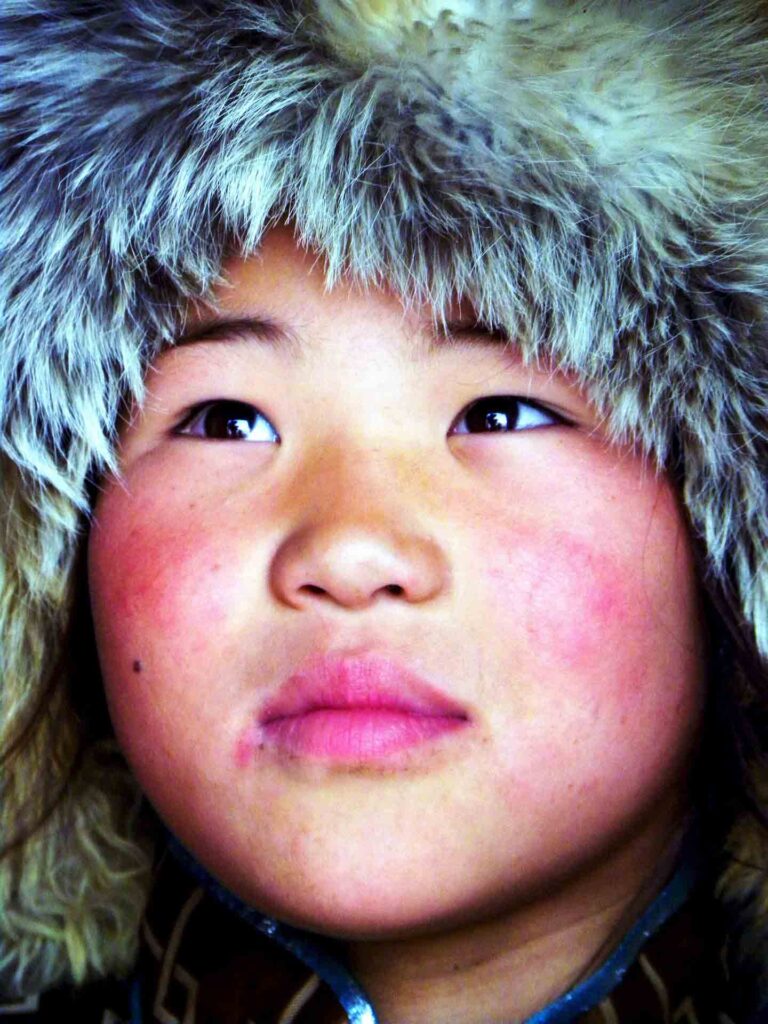
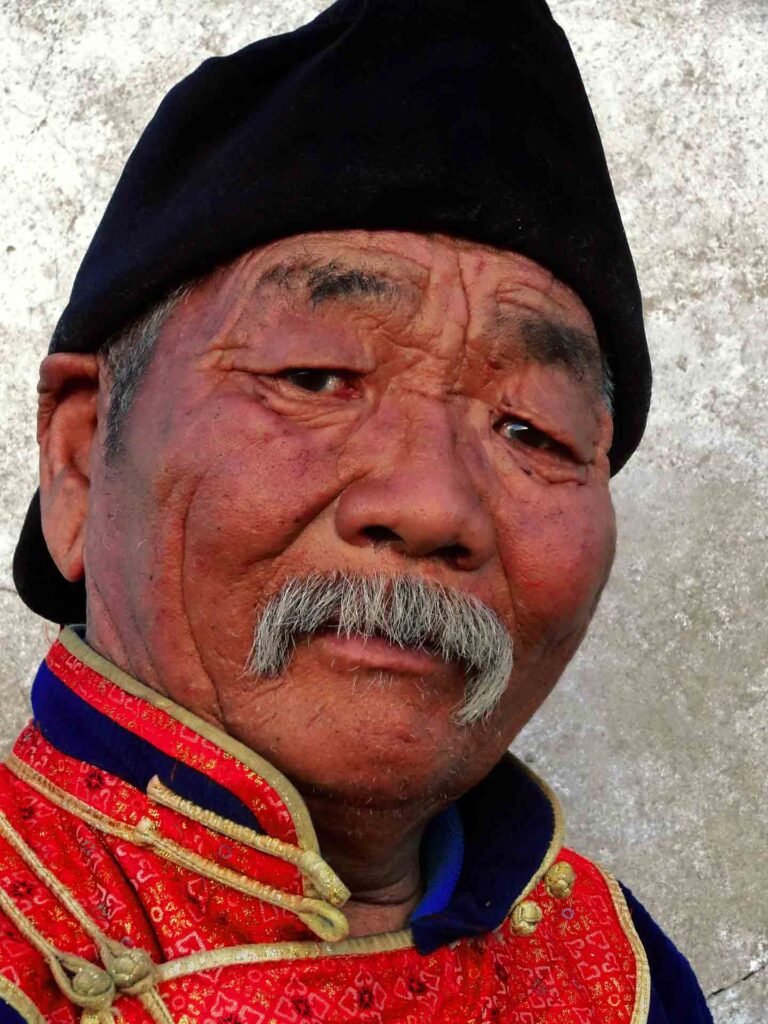
The histories and cultures of China, Mongolia, and the Silk Road have all been significantly influenced by the Gobi Desert. The Gobi Desert served as an important economic hub since it hosted many stops along the Silk Road, a network of trade routes that connected China with the Mediterranean. Cities like Dunhuang and Turfan, which were significant hubs of trade, study, and culture, were developed as a result.
Due to its use as a battlefield for military operations, conflicts, and battles, the Gobi Desert has also had a profound impact on China and Mongolian history. The harsh desert environment has also molded the distinctive culture of the nomadic groups who have long resided in the Gobi Desert.
For military planning and wars, such as the Mongol conquests and the Chinese Communist revolution, the Gobi Desert has been a crucial location. Due to its advantageous position, the Gobi Desert has played a significant role in military strategy and warfare throughout the history of the region, because it serves as a natural barrier that helps stop potential invasions through it.
Buddhism and Shamanism have both had significant spiritual and religious followings in the Gobi Desert for centuries. Buddhists have traveled to the Gobi Desert for hundreds of years as a destination of pilgrimage, and it is still a significant Buddhist center today. The desert is home to numerous significant Buddhist temples, including the Mogao Caves which is still a significant location for spiritual and religious activity.
The Gobi Desert has served as a significant source of inspiration for literature and film. Many artists throughout history, including poets, writers, film directors, and composers have been influenced by the Gobi Desert’s distinctive landscapes and rich heritage, for example, in the movie “dune” Hanz Zimmer’s composition was inspired by the songs that the Gobi deserts inhabitants sing and the sounds that the “singing sands” make as the dunes move. Many works of art have drawn inspiration from the desert’s natural beauty, harsh conditions, and stories of the people who lived and went through it.

The Gobi Gurvansaikhan National Park is located on the edge of the Mongolian side of the Gobi Desert not far from Mongolia’s southern border. It is Mongolia’s largest national park with a size of around 10500 square miles (27 000 square kilometers), it stretches 50 mi (80 km) north to south and 240 mi (380 km) east to west. The park gets its name from the Gurvan Saikhan Mountains which are located in the eastern half of the national park, their name translates to “ the three beauties” in English.

The largest desert lake in the world is Lake Bositeng is also known as “Lake Bosten”, which is located in the Gobi Desert. The largest desert lake in the world, Lake Bositeng, is found in China’s northernmost region of the Gobi Desert. It has a surface area of almost 390 square miles (1 000 square kilometres), making it both a well-liked tourist destination and a significant water source for the region. There is also a plethora of different fish species that dwell in the lake’s waters, they are a very valuable food source to the surrounding regions in China.
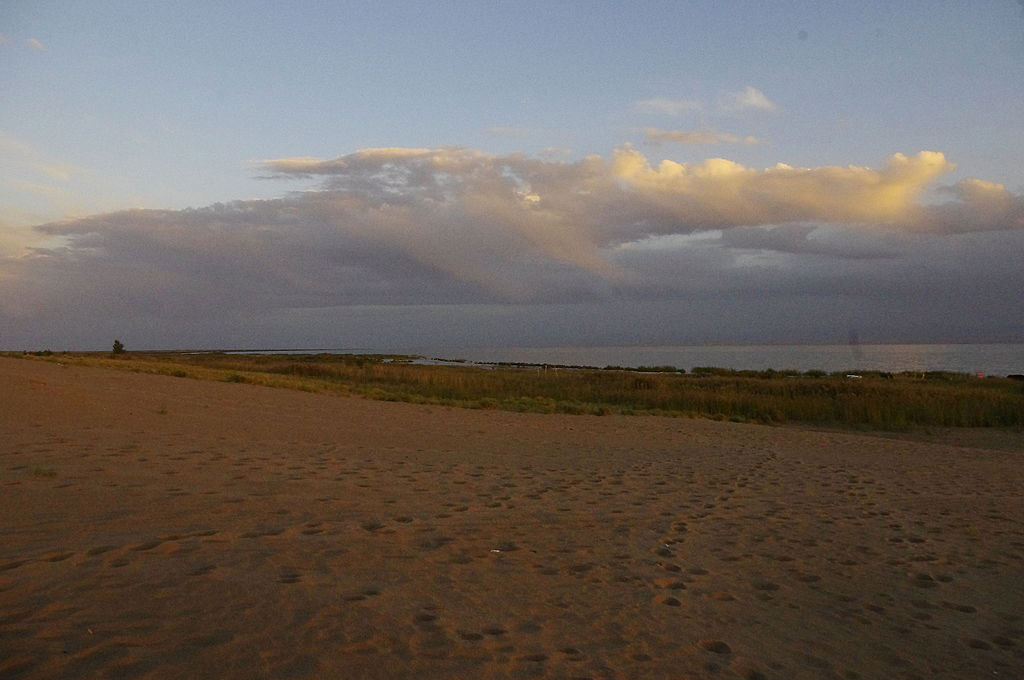
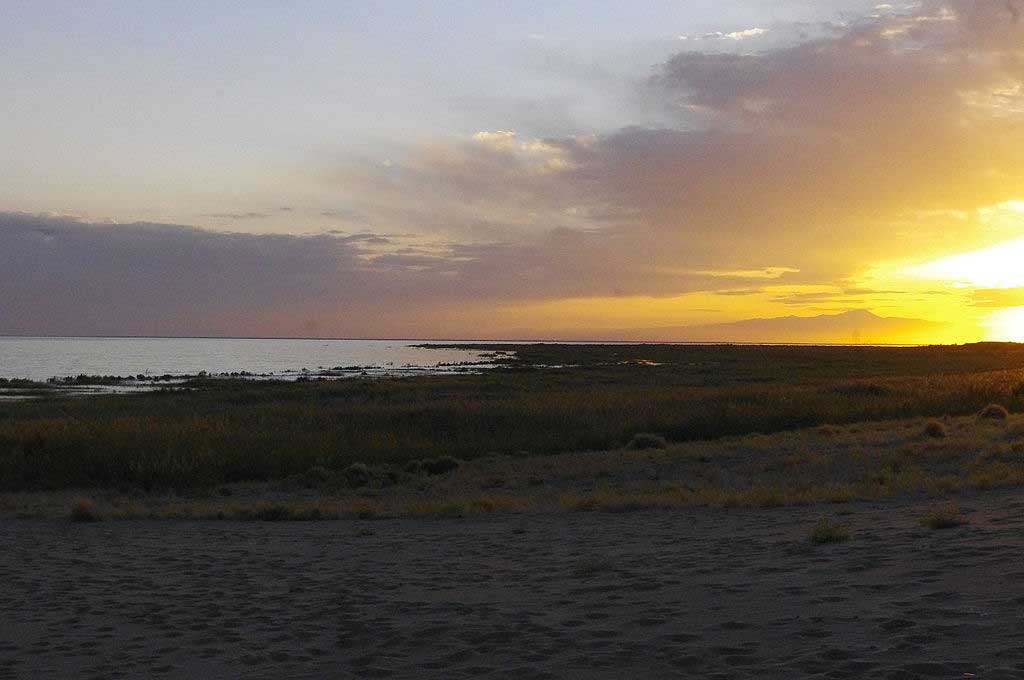
Gobi bears, Bactrian camels, and the Gobi jerboa are just a few of the unusual animals that may be found in the Gobi Desert. These creatures can be found all across the desert because they have adapted to the harsh desert climate. The Gobi bear, for instance, is a brown bear subspecies that dwells in the highlands of the Gobi Desert. Bactrian camels are found in the northern Gobi Desert of Mongolia and are renowned for their ability to endure the harsh and rocky desert environments. Because of these rare species, the Gobi Desert is a significant wildlife refuge and a well-liked vacation spot not only for those who enjoy the many activities the desert has to offer but also for those who enjoy nature photography.
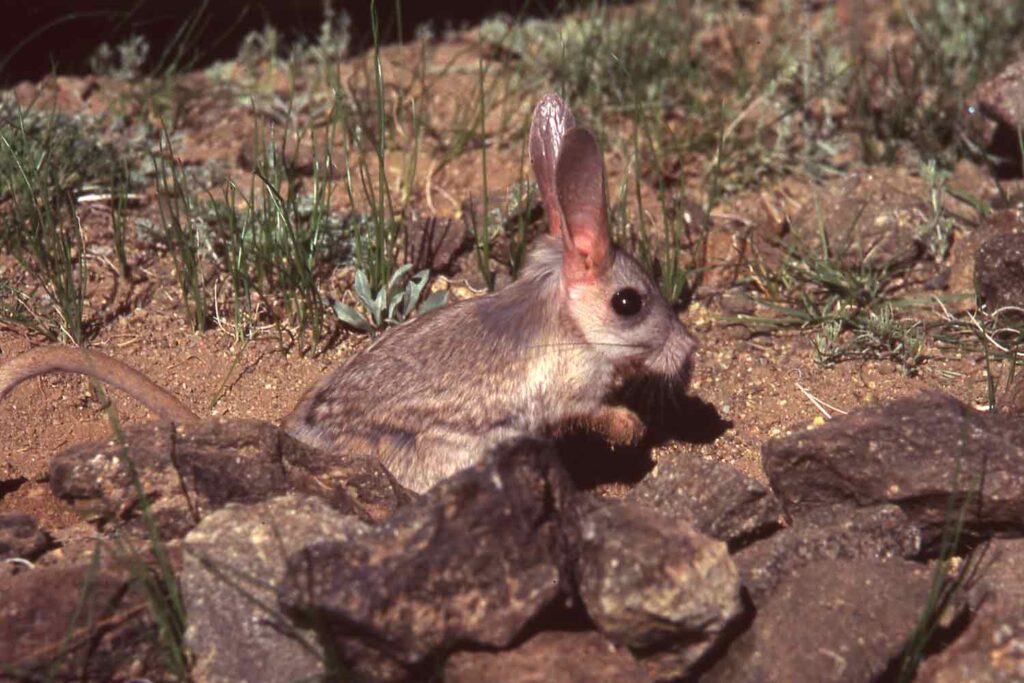
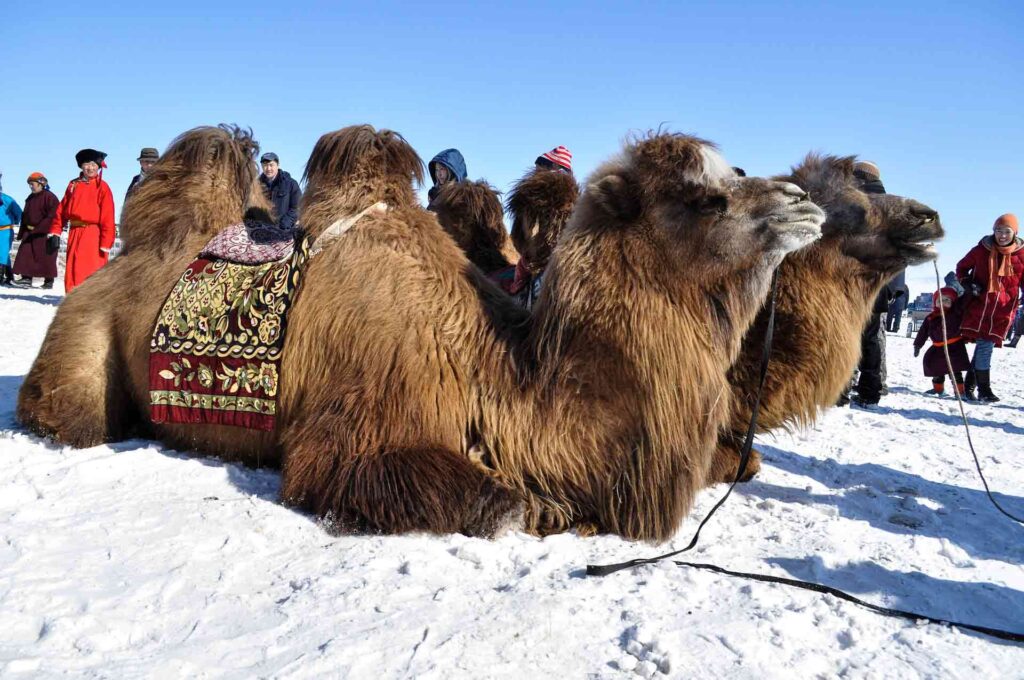
The Gobi Desert is home to many unique plant species, including the Gobi sagebrush and the Chinese desert elm. The Gobi sagebrush is a hardy perennial shrub that can tolerate the hot, dry conditions of the desert, and it is an important source of food and medicine for the desert nomadic communities who have traditionally relied on it for their survival.
The Chinese desert elm on the other hand is a deciduous tree that can survive the freezing cold desert winters. This tree is important for its ecological functions, it provides shelter and food to various desert animals that live in this harsh environment. The unique plants found in the Gobi Desert have inspired scientific studies and research to understand more about the desert environment and its inhabitants.
A palaeontologist’s paradise, the Gobi Desert has seen many major discoveries in recent years, including the earliest known dinosaur eggs in the 1920s and the first Velociraptor fossil was also found in the northern part of the desert. These discoveries have greatly advanced our understanding of the evolution of dinosaurs and the ancient environments in which they lived.
The Gobi Desert is rich in mineral resources, including coal, oil, natural gas, and various metals such as gold, silver, and copper. The extraction and production of these resources are an important source of income for the region and play an important role in the economies of both China and Mongolia.
The gold and copper mined in the Gobi Desert play an important role in the production of technology in China and are widely used in products such as smartphones, electric cars, and wind turbines. Unfortunately, however, the extraction of these resources has also brought challenges such as environmental degradation and the displacement of the local communities.
The Gobi Desert is home to one of the biggest solar plants in the world, The Delingha Solar Park. This solar power plant is currently under construction within the Gobi desert and even before being finished it is one of the biggest solar power plants not only in a desert but also in the world. Upon its completion, it will enable China to meet its goal of generating 20% of its power through renewable energy by the year 2030. The Delingha Solar Park is an important step towards sustainable energy development in China and the world as a whole.
The Gobi Desert is also home to the world’s largest desert-based wind farm, the Gansu Wind Farm. The wind farm is also still under construction and is expected to be able to produce 20GW of electricity upon completion In 2025, it is currently producing just under 8GW of electricity. As of 2020 the project was estimated to cost the Chinese government around 17.8 billion dollars also making it one of the most expensive wind power plants in the world. The Gansu Wind Farm is an important step towards sustainable energy development in the Gobi Desert and China as a whole.
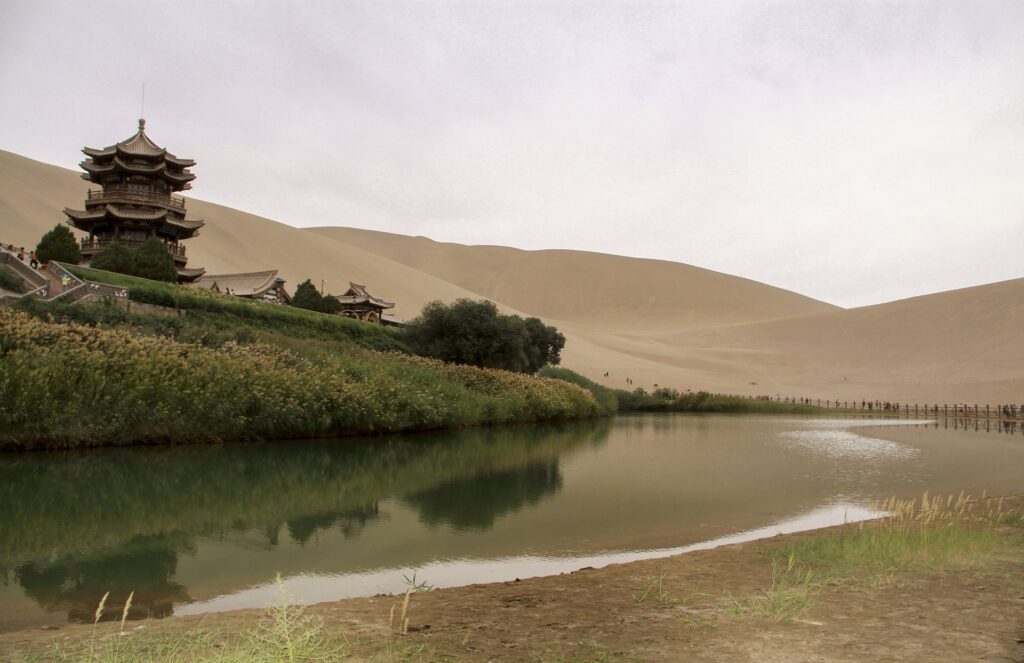
I hope this article helped you learn something new about the Gobi Desert. As you would know by now the Gobi Desert spans across two different countries that being China and Mongolia, so we hope that if you ever find yourself in one of those countries you take a bit of time to check out all the fun and interesting stuff the Gobi Desert has to offer.